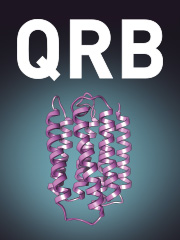Complex Webs
Complex Webs synthesises modern mathematical developments with a broad range of complex network applications of interest to the engineer and system scientist, presenting the common principles, algorithms, and tools governing network behaviour, dynamics, and complexity. The authors investigate multiple mathematical approaches to inverse power laws and expose the myth of normal statistics to describe natural and man-made networks. Richly illustrated throughout with real-world examples including cell phone use, accessing the Internet, failure of power grids, measures of health and disease, distribution of wealth, and many other familiar phenomena from physiology, bioengineering, biophysics, and informational and social networks, this book makes thought-provoking reading. With explanations of phenomena, diagrams, end-of-chapter problems, and worked examples, it is ideal for advanced undergraduate and graduate students in engineering and the life, social, and physical sciences. It is also a perfect introduction for researchers who are interested in this exciting new way of viewing dynamic networks.
- Brings together the dynamical properties of networks at a sophisticated mathematical level
- Includes a large number of real-world webs that have inverse power-law distributions, exposing the myth of normal statistics to describe real-world webs
- Explores the multiple mathematical approaches to inverse power-laws, revealing the mechanisms responsible for complex webs
Reviews & endorsements
'Recent books highlighting different aspects of network science can be roughly separated into popular works that lay out an integrated scientific view of humans and modern technology; manuals and references focused on specific application areas such as biophysics, econophysics, or sociophysics; and texts that explore advanced networks-related topics that go beyond particular disciplines. Complex Webs most closely matches the last (and smallest) category, as it interweaves various topics from statistical physics to support the understanding of complex networks; perhaps in the future those topics will form the foundation of a network science.' H. Eugene Stanley, Physics Today
Product details
December 2010Hardback
9780521113663
386 pages
254 × 179 × 22 mm
0.9kg
110 b/w illus. 6 tables 27 exercises
Available
Table of Contents
- 1. Webs
- 2. Webs, trees and branches
- 3. Mostly linear dynamics
- 4. Random walks and chaos
- 5. Non-analytic dynamics
- 6. Brief recent history of webs
- 7. Dynamics of chance
- 8. Synopsis.






